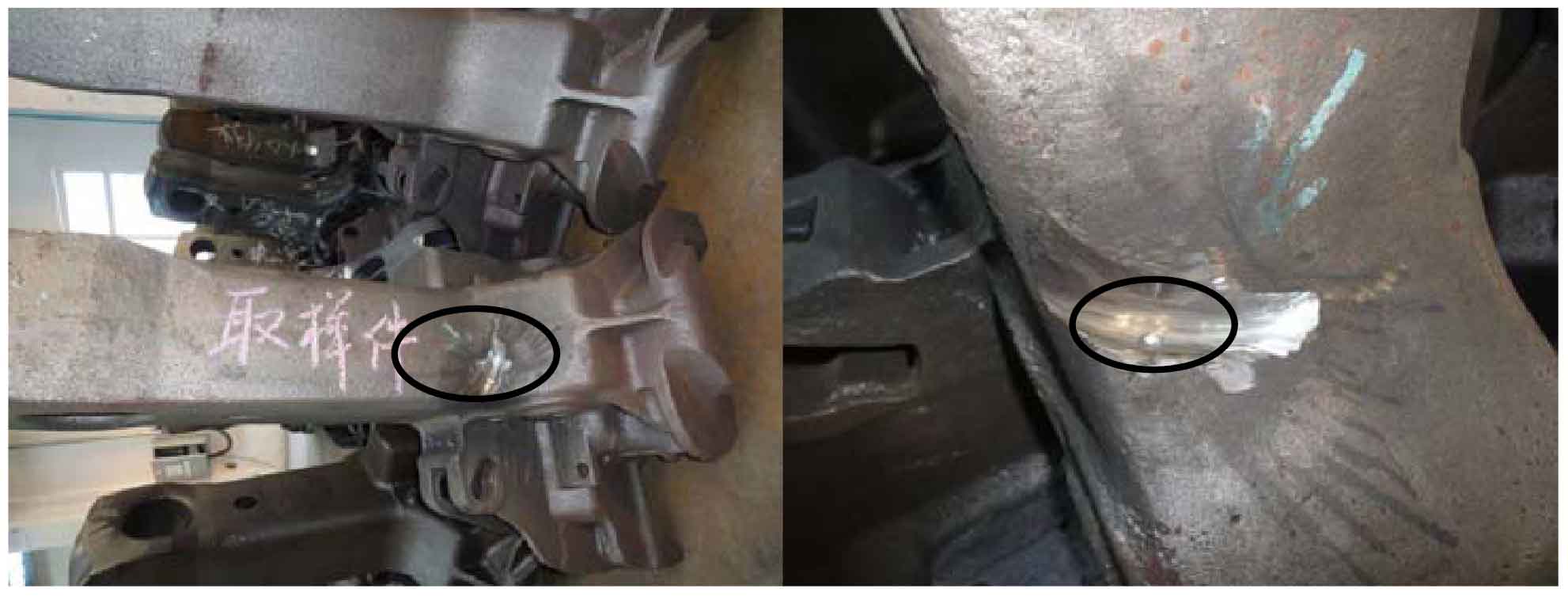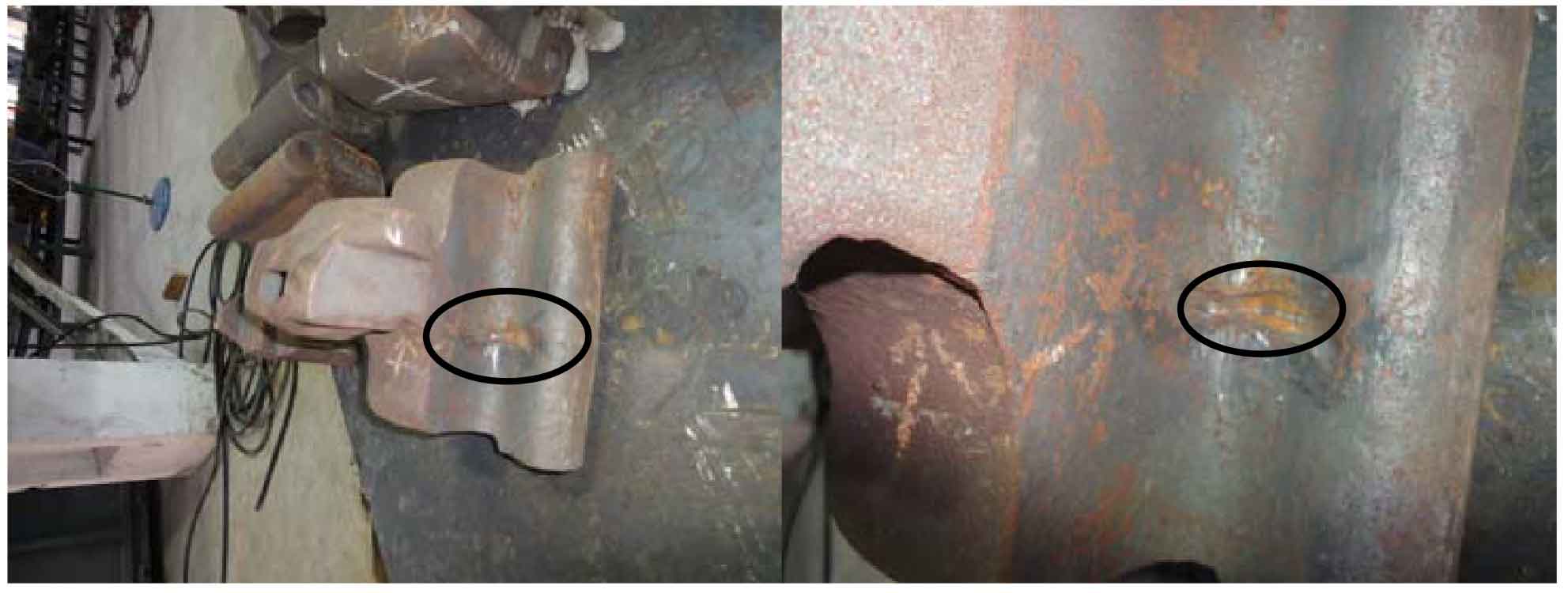The flaw detection in the finishing workshop is mainly to detect the superficial cracks of steel castings after quenching and tempering, and the detection parts are the same as those in the casting workshop. The flaw detection of the hook body and tongue in the finishing workshop is shown in Table 1 and 2, and the crack pattern of the hook body and tongue after air gouging is shown in Figure 1 and 2.
It can be seen from Tables 1 and 2 that after quenching and tempering, Finishing welding and low-temperature tempering, some crack defects appear on the hook tongue of the hook body, which is much less than that in the casting workshop. The cracks mostly appear in the crack welding and repair parts of the casting workshop, that is, the hook body cracks are mainly concentrated in the hook lug, hook body, hook tail pouring riser and hook neck, and the hook tongue cracks are mainly concentrated in the S-surface. The crack on the hook tongue of the hook body is still a surface crack, which can be eliminated by air gouging and welding to obtain qualified parts.
| Number of detection hooks (PCs.) | Hook ear | Hook body | Hook neck | Hook tail | Other | Total |
| 690 | 16 | 26 | 7 | 24 | 4 | 77 |
| Percentage of cracked castings (%) | 2.3 | 3.8 | 1.0 | 3.5 | 0.6 | 11.2 |
To sum up, the flaw detection results of the casting workshop and finishing workshop before and after the quenching and tempering of the hook body and hook tongue show that hot cracks, cold cracks, heat treatment cracks and welding cracks still exist, and the number of cracks in the casting workshop is still large. Although it will not cause the scrap of steel castings, it will increase the welding repair man hours and processing costs. On the one hand, the occurrence of cracks is due to the objective reasons such as high thermal sensitivity and poor weldability of Grade E steel. More importantly, a considerable number of crack defects have been produced in the subsequent cleaning processes of steel castings, such as riser cutting, air gouging, welding repair, pre normalizing, tempering, surface quenching, quenching and tempering. Therefore, it is necessary to further standardize the machining and heat treatment process operation of steel castings and carry out corresponding worker operation training.
| Number of detection hooks (PCs.) | S side | Other | Total |
| 500 | 14 | 1 | 15 |
| Percentage of cracked castings (%) | 2.8 | 0.2 | 3 |


